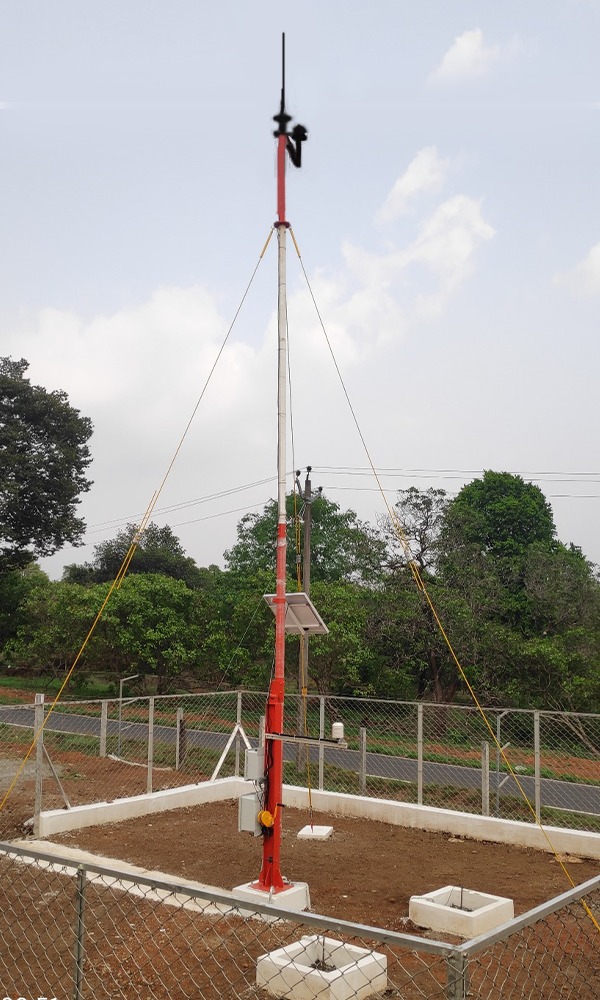
Solar energy is rapidly gaining importance as a clean and renewable energy source worldwide. To fully harness its potential, it's crucial to understand local solar resources and monitor the real-time performance of solar energy systems. This is where solar radiation monitoring systems come into play, playing a key role in both solar resource assessment and performance evaluation of photovoltaic (PV) plants. These systems help ensure that solar plants operate at their highest efficiency, providing valuable data to improve performance and maintenance decisions.
In line with this need, the Central Authority for Energy (CAE), through the Ministry of Power and the Central Electricity Authority (CEA), has introduced the 2025 Guidelines for Automatic Weather Stations (AWS). These guidelines aim to standardize and enhance the weather data infrastructure for solar PV plants, ensuring precise, real-time measurement of critical meteorological parameters. This, in turn, will improve plant performance evaluation, enable better forecasting, and contribute to greater grid reliability.
To capture high-resolution meteorological data required for assessing real-time and long-term performance of solar PV plants.
To enable compliance with national forecasting and grid integration norms.
To provide consistent input to stakeholders including plant operators, regulators, DISCOMs, and forecasting agencies.
Ensures accurate and uniform weather data across solar projects, as per CEA guidelines for performance and grid compliance.
Enables performance benchmarking using actual site conditions.
Supports forecasting models for load dispatch centres and national weather agencies.
Enhances investment confidence through traceable and reliable operational data.
Global Horizontal Irradiance (GHI) - To assess total solar input on horizontal surface.
Ambient Temperature - Temperature’s impact on PV module efficiency.
Relative Humidity - Impact on module degradation and cooling.
Rainfall - Soiling loss identification & cleaning schedule.
Wind Speed and Direction - Safety and structural monitoring.
Global Inclined Irradiance (GII) - Irradiance on module tilt plane (POA).
Barometric Pressure - Optional – for forecasting & diagnostics.
Pyranometer (GHI/GII) - ISO 9060 thermopile, <±0.5% non-linearity, IP65, response time ≤5 sec.
Temperature & Humidity - Accuracy: ±0.35°C and ±3% RH, thermoplastic shield with ≥9 louvres.
Wind (Ultrasonic) - Speed: 0–75 m/s, Accuracy: ±2%; Direction: ±3°, IP65 rated.
Rain Gauge (Tipping Bucket) - Resolution: 0.5 mm, Accuracy: ±2% (up to 25 mm/hr), marine-grade or FRP body.
Pressure Sensor - 600–1100 hPa, Accuracy: ±20 Pa, digital output.
10m Tiltable Mast: Painted red & white, with stainless steel guy wires.
Rain Gauge Foundation: 1 ft × 1 ft base, 2 ft height.
Fenced Area: 10m × 10m fenced plot with MS angle and chain link.
Earthing & Lightning Protection: Separate pits for signal and surge, with copper rods and plates.
Multi-channel (analog/digital) compatibility with built-in Real-Time Clock (RTC).
Data Encryption: AES-256 with user-access logs retained for 180 days.
Time synchronization via NAVIC.
Remote configuration with secure authentication.
Storage: 30-day backup with QC procedures per WMO standards.
Communication via MODBUS/IEC 104, cellular modem (3G/4G/5G), dual SIM support.
SCADA and NCMRWF/IMD integration via SFTP.
Off-grid powered via SMF battery, MPPT solar charge controller, and PV panel.
Enclosures: Dual IP66-rated FRP enclosures for DAS and battery with ventilation and locking mechanism.

| Applications | Utility |
|---|---|
| Performance Evaluation | Accurate PR, CUF, and energy yield analysis using real-time POA/GHI |
| Forecasting & Grid Dispatch | Enables short and medium-term solar forecasting |
| SCADA Integration | Automated O&M alerts, remote diagnostics |
| Regulatory Compliance | Meets CERC/SERC mandates and CAE 2025 requirements |
| Loss Analysis | Detects temperature derating, soiling losses, and wind effects |
| Data Reporting to IMD/NCMRWF | National meteorological and energy modeling |
| Aspect | Standard / Requirement |
|---|---|
| Pyranometers | ISO 9060:2018, IEC 61724-1:2021 |
| Sensor Calibration | NABL traceable / as per IMD procedures |
| Data Logging & Time Sync | Satellite (NAVIC), RTC with 1-year battery backup |
| DAS Data Security | AES 256-bit encryption, cyber-secure access control, IDS/Firewall |
| Quality Control of Data | WMO Guide No. 8, Chapter 1, Level I–III QC checks |
| Communication Protocols | MODBUS/IEC-104, SFTP, dual SIM modem |
| Cyber Security | CEA 2021 Cybersecurity Guidelines, CERT-In retention of logs for 180 days |
| Reporting to National Agencies | Data push to IMD/NCMRWF every 15 minutes or 1 minute during events |
